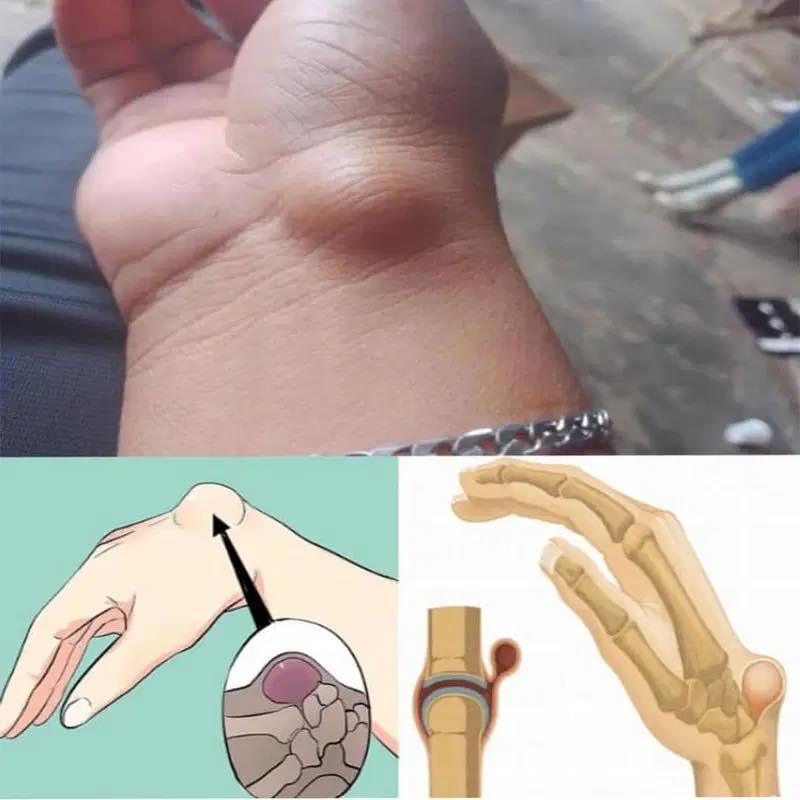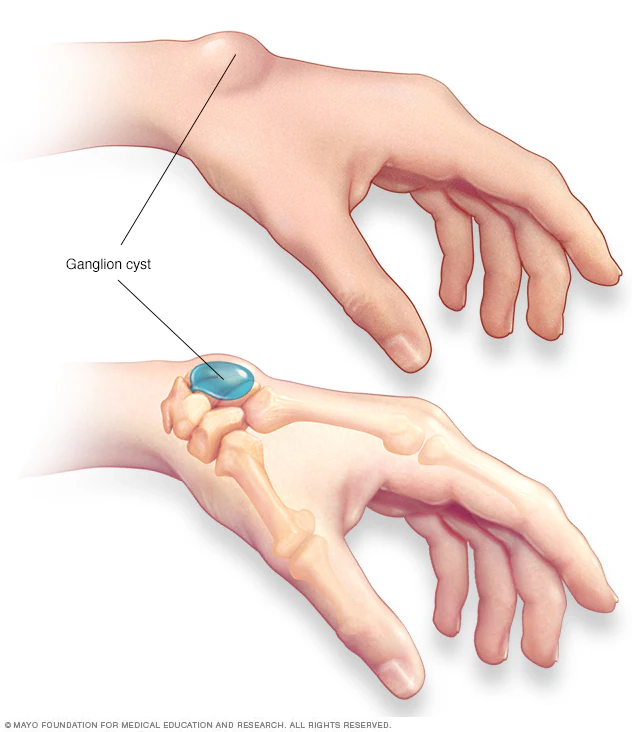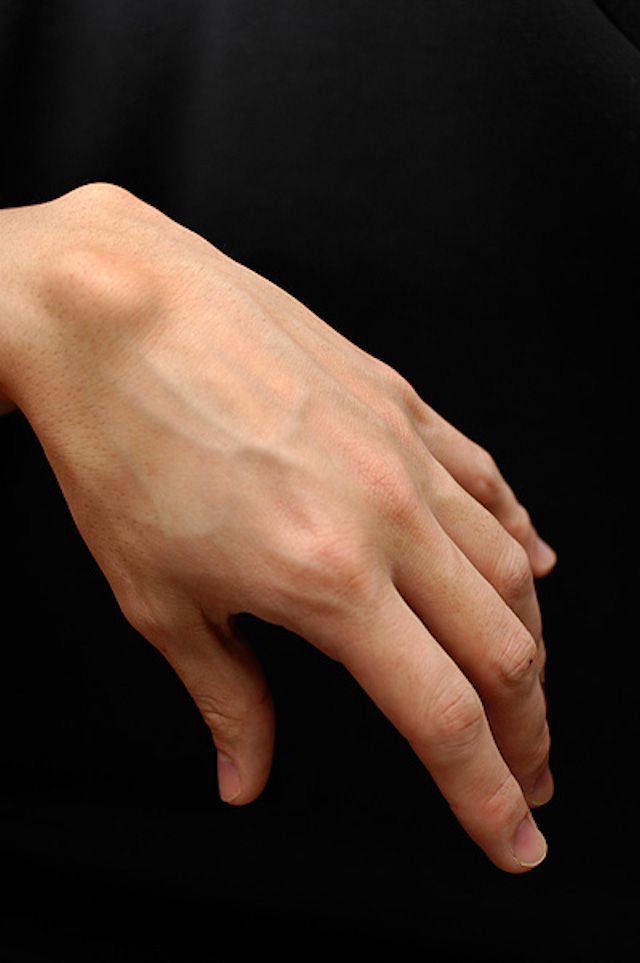Have you ever noticed a soft, round lump on your wrist that seems to come and go? It might be a wrist ganglion, a fluid-filled cyst that commonly appears on the back or front of the wrist. While these cysts are generally harmless, they can sometimes cause discomfort, pain, or limited movement.
So, what exactly is a wrist ganglion, and how can you manage it? Let’s dive into the causes, symptoms, and treatment options for this common wrist condition.

What Is a Wrist Ganglion and Why Does It Appear?
A wrist ganglion, also known as a synovial cyst, is a noncancerous lump that forms near joints or tendons. It develops when synovial fluid—the natural lubricant that helps joints and tendons move smoothly—leaks out and forms a sac-like swelling.
Although the exact cause of wrist ganglions isn’t always clear, several factors may contribute to their development, including:
- Repetitive Wrist Movements – Activities like typing, playing musical instruments, or sports involving wrist action can put stress on the joint, increasing the risk of ganglion formation.
- Previous Wrist Injuries – A sprain, fracture, or past trauma to the wrist can lead to weakened joint structures, making it easier for a ganglion to develop.
- Arthritis – Some studies suggest that people with osteoarthritis or joint inflammation are more likely to develop ganglion cysts.
- Genetic Factors – If family members have had ganglions, there may be a genetic predisposition to developing them.
While ganglions are most common on the wrist, they can also appear on the fingers, feet, or other joints.
Video: Ganglion Cyst Wrist – Everything You Need To Know – Dr. Nabil Ebraheim
Symptoms of a Wrist Ganglion: What to Look For
Wrist ganglions can vary in size, sometimes growing larger or disappearing altogether. The most common symptoms include:
- A Soft, Visible Lump – The cyst is usually round and smooth and can be felt just under the skin. It may feel firm or soft, depending on its size and fluid content.
- Pain or Discomfort – While some ganglions are painless, others can cause aching pain, especially with wrist movement or pressure.
- Tingling or Numbness – If the ganglion presses on a nerve, it can lead to numbness, weakness, or a tingling sensation in the hand or fingers.
- Limited Wrist Mobility – In some cases, a larger ganglion can restrict movement, making it harder to bend or flex the wrist.
Can a Wrist Ganglion Go Away on Its Own?
Yes, in many cases, wrist ganglions disappear without treatment. Some shrink over time, while others may burst and reabsorb naturally. However, for persistent or painful ganglions, medical intervention may be needed.

Treatment Options for Wrist Ganglions
If a wrist ganglion is causing pain or interfering with movement, there are several treatment options available. The best approach depends on the severity of symptoms and whether the cyst keeps returning.
1. Watchful Waiting (No Treatment Needed)
- If the ganglion isn’t painful or limiting movement, doctors often recommend a wait-and-see approach.
- Many ganglions resolve on their own without needing medical intervention.
- Avoiding unnecessary pressure on the wrist can help prevent the ganglion from enlarging.
2. Wrist Immobilization
- Wearing a wrist brace or splint can help reduce movement and pressure, potentially allowing the cyst to shrink.
- Immobilization can also relieve mild discomfort caused by repetitive motion.
3. Aspiration (Draining the Cyst)
- If the ganglion is large or painful, a doctor may perform an aspiration procedure to drain the fluid using a needle.
- While this offers temporary relief, ganglions often return because the root cause remains untreated.
- A steroid injection may be used after aspiration to reduce inflammation and lower the risk of recurrence.

4. Surgical Removal (Ganglion Excision)
- For persistent, painful, or recurrent ganglions, surgery may be recommended.
- The procedure involves removing the cyst along with its root, significantly reducing the chance of recurrence.
- Recovery time is usually a few weeks, depending on the size and location of the cyst.
Surgery is generally a last resort, as many ganglions don’t require this level of intervention.
Should You See a Doctor?
While most wrist ganglions are harmless, you should see a doctor or specialist if:
- The cyst is painful or growing rapidly.
- You experience tingling, numbness, or weakness in your wrist or fingers.
- The ganglion interferes with your daily activities or wrist function.
- The lump keeps coming back after aspiration.
A medical professional can examine the cyst, perform imaging tests (if necessary), and recommend the best course of action.
Video: Ganglion Cyst Of The Wrist – Everything You Need To Know – Dr. Nabil Ebraheim
Can You Prevent Wrist Ganglions?
There’s no guaranteed way to prevent ganglion cysts, but reducing repetitive wrist stress and avoiding unnecessary strain can help lower the risk. Some tips include:
- Use proper wrist support when typing, playing sports, or performing repetitive tasks.
- Strengthen your wrist muscles through exercises to support joint stability.
- Avoid excessive wrist bending or pressure on the joint.
If you’ve had a ganglion before, keeping an eye on wrist health can reduce the chances of recurrence.
Final Thoughts
Wrist ganglions may look alarming, but in most cases, they are harmless and don’t require treatment. However, if the cyst becomes painful or interferes with daily activities, medical intervention can provide relief.
Whether you choose to monitor the cyst, use a brace, or consider medical treatment, understanding your options helps you make the best decision for your wrist health. If you ever notice an unusual lump on your wrist, consult a doctor for reassurance and proper care—your hands deserve it!